Filter by
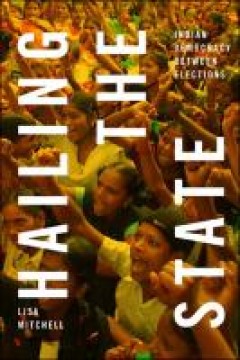
Hailing the State: Indian Democracy between Elections
Lisa Mitchell explores the historical and contemporary methods of collective assembly that people in India use to hold elected officials and government administrators accountable.
- Edition
- Ed. 1
- ISBN/ISSN
- 9781478093589, 9781478016120
- Collation
- 319
- Series Title
- -
- Call Number
- 320 MIT h
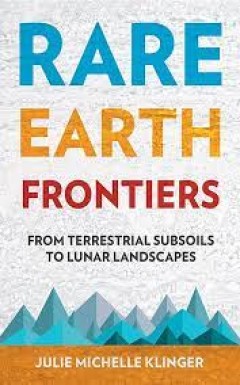
Rare Earth Frontiers From Terrestrial Subsoils to Lunar Landscapes
Owing to their unique magnetic, phosphorescent, and catalytic properties, rare earths are the elements that make possible teverything from the miniaturization of electronics, to the enabling of green energy and medical technologies, to supporting essential telecommunications and defense systems. An iPhone uses eight rare earths for everything from its colored screen, to its speakers, to the min…
- Edition
- -
- ISBN/ISSN
- 9781501714603
- Collation
- -
- Series Title
- -
- Call Number
- -
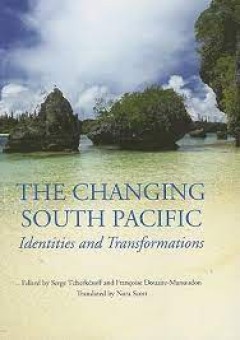
Changing South-Pacific Identities and Transformations
The texts collected in this volume take an anthropological approach to the variety of contemporary societal problems which confront the peoples of the contemporary South Pacific: religious revival, the sociology of relations between local groups, regions and nation-States, the problem of culture areas, the place of democracy in the transition of States founded on sacred chiefdoms, the role of c…
- Edition
- -
- ISBN/ISSN
- 9781921536151
- Collation
- -
- Series Title
- -
- Call Number
- -
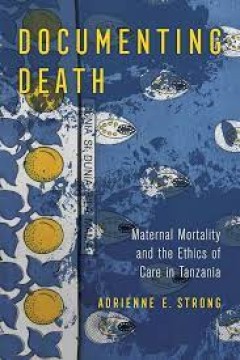
Documenting Death Maternal Mortality and the Ethics of Care in Tanzania
"Documenting Death is a gripping ethnographic account of the deaths of pregnant women in a hospital in a low-resource setting in Tanzania. Through an exploration of everyday ethics and care practices on a local maternity ward, anthropologist Adrienne E. Strong untangles the reasons Tanzania has achieved so little sustainable success in reducing maternal mortality rates, despite global developme…
- Edition
- -
- ISBN/ISSN
- 9780520973916
- Collation
- -
- Series Title
- -
- Call Number
- -
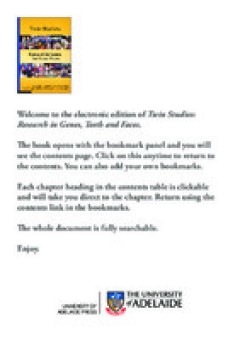
Twin Studies: Research in Genes, Teeth and Faces
This volume is about an ongoing long-term research initiative led by researchers from the School of Dentistry at the University of Adelaide. The aim of this book is to provide an overview of the studies of the teeth and faces of Australian twins and their families that have extended over more than thirty years.
- Edition
- Ed. 1
- ISBN/ISSN
- 9781925261158
- Collation
- 199
- Series Title
- -
- Call Number
- 617.607 TWI t
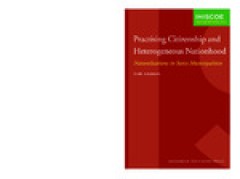
Practising Citizenship and Heterogeneous Nationhood: Naturalisations in Swiss…
Switzerland likely has the most particular naturalization system in the world. Whereas in most countries citizenship attribution is regulated at the central level of the state, in Switzerland each municipality is accorded the right to decide who can become a Swiss citizen. This book aims at exploring naturalization processes from a comparative perspective and to explain why some municipalities …
- Edition
- Ed. 1
- ISBN/ISSN
- 9789089640345
- Collation
- 214
- Series Title
- IMISCoe Dissertations
- Call Number
- 325.1 HEL p
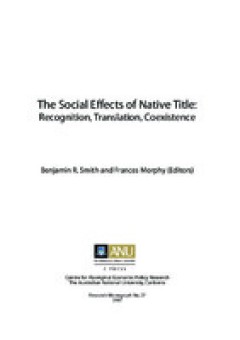
The Social Effects of Native Title: Recognition, Translation, Coexistence
The papers in this collection reflect on the various social effects of native title. In particular, the authors consider the ways in which the implementation of the Native Title Act 1993 (Cwlth), and the native title process for which this Act legislates, allow for the recognition and translation of Aboriginal law and custom, and facilitate particular kinds of coexistence between Aboriginal tit…
- Edition
- Ed. 1
- ISBN/ISSN
- -
- Collation
- 223
- Series Title
- Research Monograph, 27
- Call Number
- 305.8 SMI s
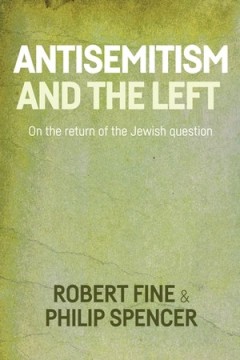
Antisemitism and the left: On the return of the Jewish question
"Universalism has always shown two faces to the world: one emancipatory and inclusionary, the other repressive and exclusionary. Jewish experience of universalism has been correspondingly equivocal. Antisemitism and the left provides an original and stimulating study of modern antisemitism, tracing the intellectual and political struggles between these two opposed perspectives. At times, univer…
- Edition
- Ed. 1
- ISBN/ISSN
- 9781526104960
- Collation
- 144
- Series Title
- -
- Call Number
- 301 SPE a
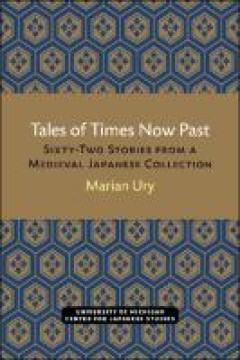
Tales of Times Now Past: Sixty-Two Stories from a Medieval Japanese Collection
Tales of Times Now Past is a translation of 62 outstanding tales freshly selected from Konjaku monogatari shu, a Japanese anthology dating from the early twelfth century. The original work, unique in world literature, contains more than one thousand systematically arranged tales from India, China, and Japan. It is the most important example of a genre of collections of brief tales which, becaus…
- Edition
- -
- ISBN/ISSN
- -
- Collation
- -
- Series Title
- -
- Call Number
- -

Thanks for Watching An Anthropological Study of Video Sharing on YouTube
YouTube hosts one billion visitors monthly and sees more than 400 hours of video uploaded every minute. In “Thanks for Watching,” Patricia Lange offers an anthropological perspective on this heavily mediated social environment, demonstrating how core concepts from anthropology—participant-observation, reciprocity, and community—apply to sociality on YouTube and how to reconceptualize an…
- Edition
- -
- ISBN/ISSN
- 9781646420094
- Collation
- -
- Series Title
- -
- Call Number
- -
 Computer Science, Information & General Works
Computer Science, Information & General Works  Philosophy & Psychology
Philosophy & Psychology  Religion
Religion  Social Sciences
Social Sciences  Language
Language  Pure Science
Pure Science  Applied Sciences
Applied Sciences  Art & Recreation
Art & Recreation  Literature
Literature  History & Geography
History & Geography